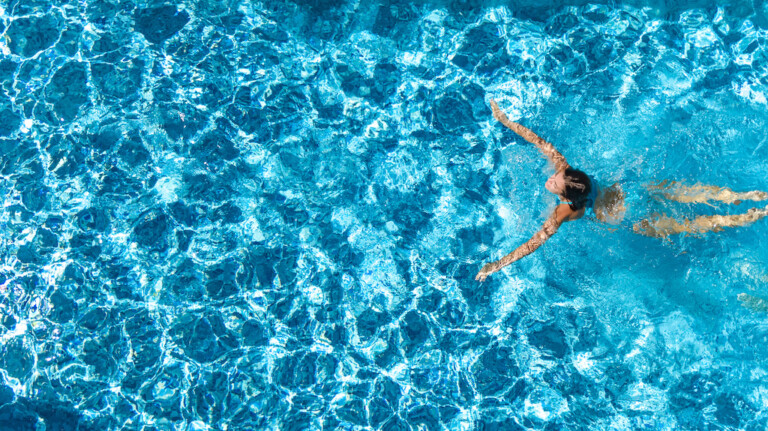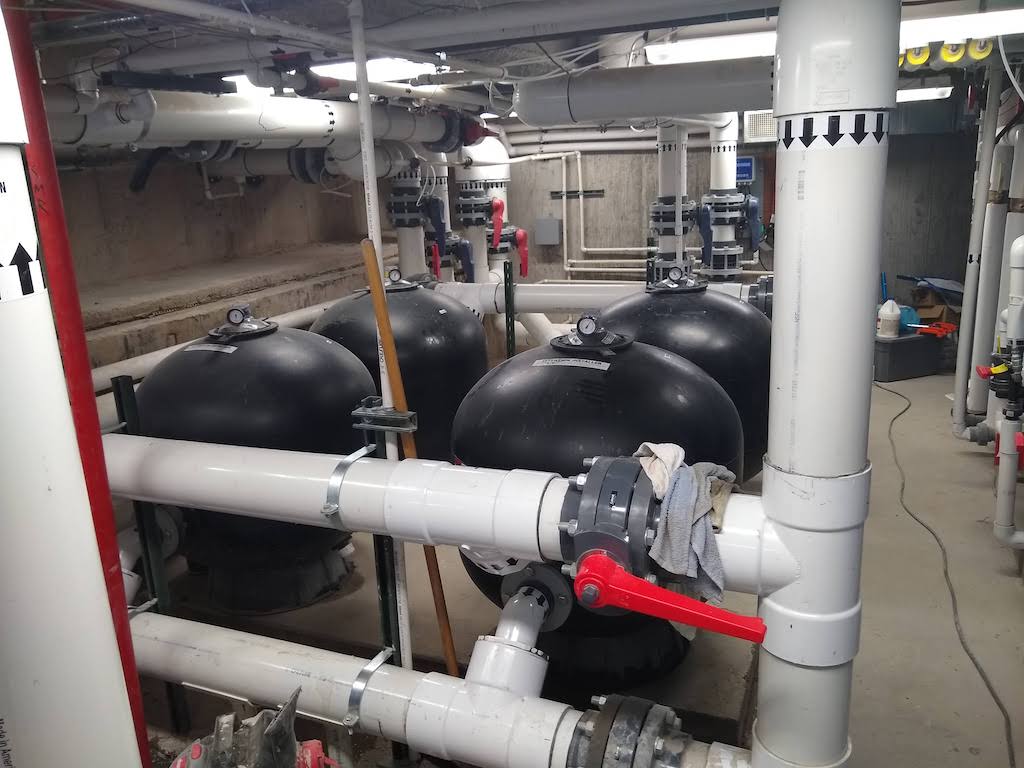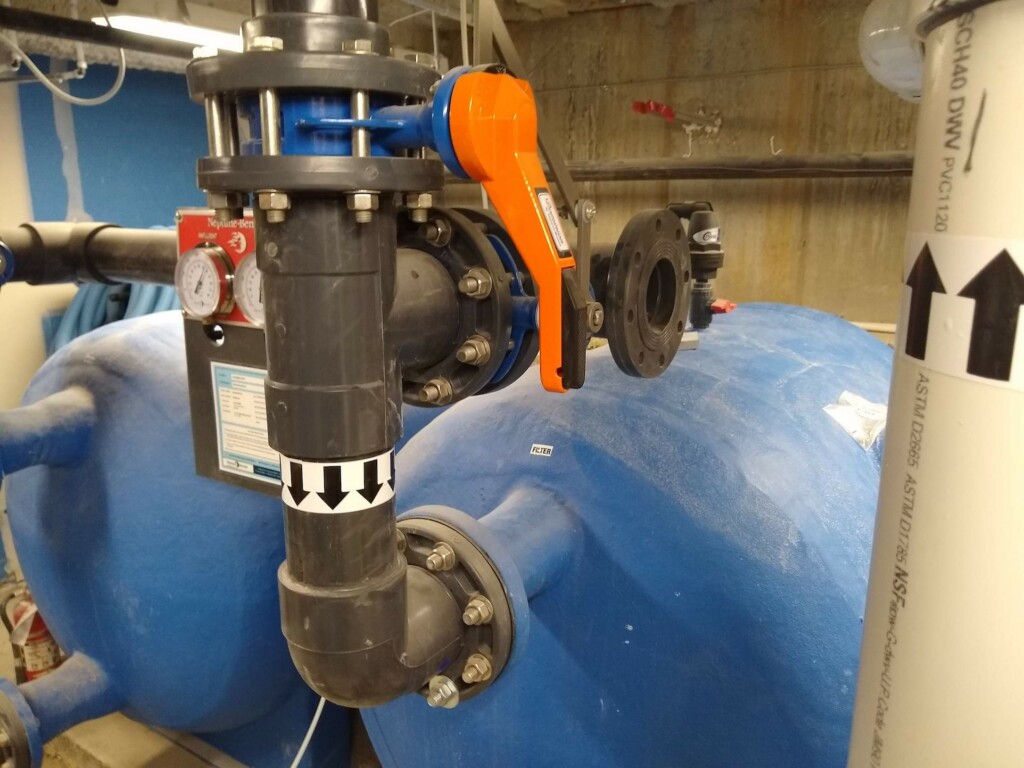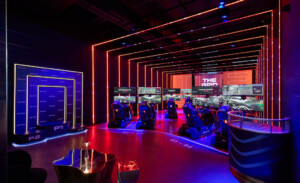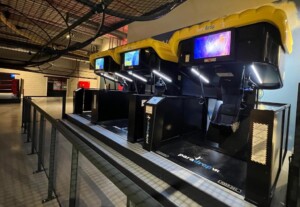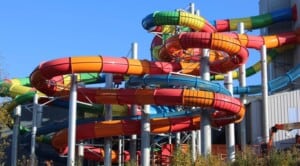Cloward H2O, an expert in aquatic design, has shared insights into the issue of salt versus chlorine – a commonly asked question when dealing with pool water disinfection. Project manager Damon Roberts, a senior member of the firm’s team of experienced engineers and designers, discusses a few of the important variables.
Salt versus chlorine
Firstly, Roberts dispels the notion that saltwater pools are not chlorine-treated pools:
“The functioning principle behind a saltwater pool is to use dissolved salt to create chlorine directly in the water. Chlorine in the form of Hypochlorous acid is still the active sanitiser/oxidizer in both salt systems and traditional chlorine-dosed systems.
“The salt chlorine generator uses electrolytic cells to create chlorine gas (as well as oxygen and hydrogen gas) directly in the water. Dr. Alison Osinski summarizes salt chlorine generation this way, “Electrolytic cells, or more properly called ‘chlorine generators’, change non-iodized salt … into chlorine gas. Electricity is applied to salt dissolved in water to form hypochlorous acid (the active sanitizing ingredient in chlorine), sodium hypochlorite (liquid chlorine made from chlorine gas and sodium hydroxide), and hydrogen gas.”
Chlorine has been the standard method for treating pools since the early 1900s. However, the methods for introducing chlorine to the water have evolved over this time period. Chlorine gas was first recognised as a disinfectant for swimming pools in the United States in 1948. This is the purest form of chlorine, but also the most hazardous. Because of the material’s inherent risks, very few facilities today use chlorine gas systems.
Sodium hypochlorite (NaOCl) in a diluted solution, also known as liquid chlorine, is one of the most common forms of chlorine used today, including in cleansers, wipes, household bleach, and drinking water treatment.
“A concentration of 10-12% is typically used in swimming pool applications (bleach is normally about 5%),” says Roberts. “Hypochlorous acid (HOCl-free chlorine) is formed when chlorine dissolves in water and is a good sanitiser and oxidizer. With a few notable exceptions, this form of chlorine is highly effective against microorganisms in water.
Erosion-feed chlorine uses tablets or granules that slowly dissolve in the water to release chlorine into a pool system.
“There are two common chemical forms of solid chlorine: Calcium Hypochlorite (Cal-Hypo) and Trichloroisocyanuric Acid (Trichlor). Depending upon the tablet’s manufacturer, the composition varies slightly but is in the range of 65-70% available chlorine by weight. The remaining percentage is composed of inert ingredients and soluble salts that hold the tablets/pellets together.”
What are the differences?
The primary idea in evaluating the difference between salt chlorine generation and traditional liquid or solid chlorine systems is that, regardless of the system, the pool water is being sanitized by chlorine, not salt, explains Roberts:
“The major difference is the delivery and methods of how chlorine is stored and introduced to the treatment system. Salt chlorine generation systems create on directly in the water on site with very little if any storage. Traditional chlorine systems require storage and transport of the liquid or tablets.”
A pool’s sanitation system (regardless of method) must have a means of dosing chlorine at a rate sufficient to keep up with changes in bather load.
“When a sudden change in bather load occurs, more chlorine must be supplied to match the increased demand. Salt chlorine generation systems can only supply new chlorine at a fixed maximum rate, depending on the size and power of the unit, and can easily be surpassed.
“Reputable manufacturers recommend that supplemental chlorine dosing (liquid chlorine) systems be provided in pools that expect to see large fluctuations in bather load. For this reason alone a salt chlorine system is not acceptable for most resort environments or for heavy use pools such as in water parks.”
Maintenance
Any system will require some level of maintenance:
“Traditional chlorine systems require regular topping off of tanks or feeders and verification of feed operation. Salt chlorine generators require maintenance of salinity levels in the water and regular cleaning of the electrolytic cell due to electrochemical reactions that occur in the cell causing deterioration and fouling of the plates. Eventually, the plates will need to be replaced as they deteriorate beyond the level of acceptable performance.”
Water, in general, will cause corrosion, and corrosion is accelerated when the salinity of the water increases. This causes galvanic corrosion potential and chloride attack on metals exposed to the water.
“Salt chlorine systems require salinity levels of 3,500 to 5,000 ppm for proper operation. Though only about 10% of the salinity of seawater, this is still a significant factor when compared with typical potable water in the United States, which is normally less than 100 ppm. Corrosion can affect any metal in contact with the water including handrails, light bezels, fasteners, pump shafts and heaters.”
Proper application is key
As with most equipment selection, proper application is the key to a successful system design, says Roberts. There are proper applications for both traditional and “salt” chlorine systems.
“Salt chlorine systems are extremely effective for residential and lightly used commercial applications. For most commercial applications it is our opinion that traditional liquid or tablet chlorine systems are the best option.”
In applications where the owner is looking for options to reduce chlorine use, Cloward H2O recommends the use of secondary disinfection systems, such as ozone.
“Ozone is a powerful oxidizer that does most of the sanitization and oxidation work in pool water, reducing the amount of chlorine required. Salt chlorine generator manufacturers also recognize the benefits of secondary disinfection and may offer these systems as part of their packages.”
